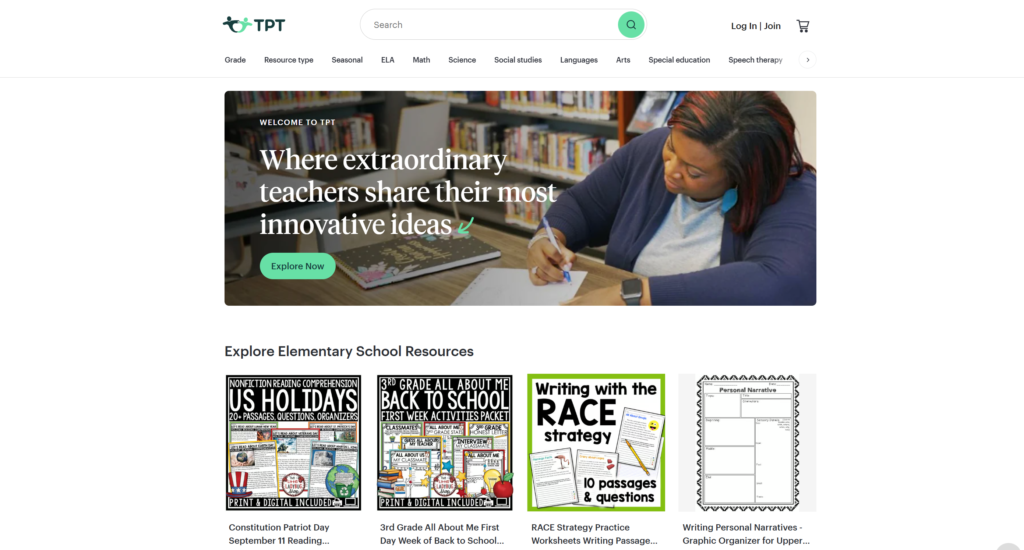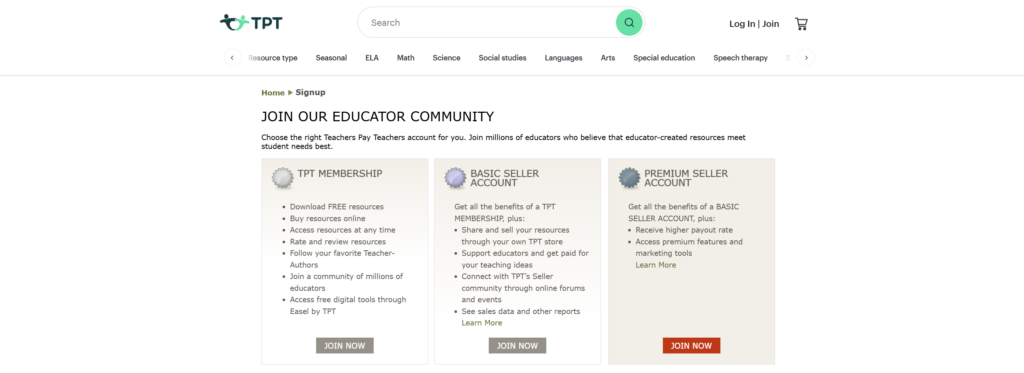How to Sell on tpt – teachers pay teachers: A Comprehensive Guide
Teachers Pay Teachers (TpT) has revolutionized the way educators share and monetize their teaching resources. With over 3 million active users, this online marketplace offers a golden opportunity for teachers to supplement their income while helping fellow educators. In this comprehensive guide, we’ll explore the ins and outs of selling on TpT, from setting up your store to maximizing your sales potential.
How To Get Started on TpT

Creating Your Account
The first step to selling on TpT is setting up your account. Visit the TpT website and click on “Become a Seller.” You’ll need to provide basic information, including your name, email address, and password. Once you’ve created your account, you’ll need to choose between a Basic Seller account (free) or a Premium Seller account ($59.95 annually).

Choosing Your Account Type
Basic Seller: This option is ideal for those just starting out or testing the waters. You’ll keep 55% of your sales, with TpT taking a 45% commission.
Premium Seller: For serious sellers, this option allows you to keep 80% of your sales, with TpT taking only a 20% commission. The annual fee quickly pays for itself if you’re consistently selling resources.
Setting Up Your Store
Your TpT store is your digital storefront, so it’s crucial to make it attractive and professional. Here are some key elements to focus on:
Store Name: Choose a catchy, memorable name that reflects your teaching style or niche.
Profile Picture: Use a high-quality, professional photo of yourself or a logo that represents your brand.
Banner: Create an eye-catching banner that showcases your products or teaching philosophy.
About Section: Write a compelling bio that highlights your teaching experience and expertise.
Creating and Uploading Products
Identifying Your Niche
Before you start creating products, it’s essential to identify your niche. Consider your areas of expertise, grade levels you’ve taught, and subjects you’re passionate about. Specializing in a particular area can help you build a loyal customer base and establish yourself as an expert in that field.
Developing High-Quality Resources
The key to success on TpT is creating valuable, high-quality resources that solve real problems for teachers. Here are some tips for developing standout products:
Focus on Originality: Create unique resources that fill gaps in the market.
Ensure Accuracy: Double-check all content for errors and factual accuracy.
Design for Usability: Make your resources user-friendly and easy to implement in the classroom.
Provide Clear Instructions: Include detailed instructions on how to use your resources effectively.
Formatting and Packaging Your Products
Presentation is crucial when it comes to selling digital products. Here are some best practices:
Use Professional Design Tools: Invest in quality design software like Adobe Creative Suite or Canva to create polished, visually appealing resources.
Maintain Consistency: Develop a cohesive brand aesthetic across all your products.
Include Preview Images: Create detailed preview images that showcase the best parts of your resource.
Offer Multiple File Formats: Provide your resources in various formats (e.g., PDF, PowerPoint, Google Slides) to cater to different user preferences.
Uploading and Pricing Your Products
When uploading your products to TpT, pay attention to the following:
Product Title: Use clear, descriptive titles that include relevant keywords.
Product Description: Write detailed descriptions that highlight the benefits and features of your resource.
Tags and Categories: Use appropriate tags and categories to help buyers find your products easily.
Pricing: Research similar products to determine competitive pricing. Consider offering some free resources to attract customers to your store.
Marketing Your TpT Store
Leveraging Social Media
Social media is a powerful tool for promoting your TpT store and connecting with potential customers. Here are some platforms to consider:
Instagram: Share visually appealing images of your products and classroom ideas.
Pinterest: Create boards showcasing your resources and educational tips.
Facebook: Join teacher groups and share valuable content (without spamming).
Twitter: Engage in educational chats and share quick tips related to your products.
Blogging and Email Marketing
Starting a blog can help you establish authority in your niche and drive traffic to your TpT store. Share teaching tips, classroom ideas, and snippets of your resources to attract potential buyers. Additionally, build an email list to keep your audience informed about new products and special offers.
Collaborating with Other Sellers
Networking with other TpT sellers can lead to valuable collaborations and cross-promotion opportunities. Participate in TpT forums, join seller groups on social media, and attend TpT conferences to connect with fellow educators.
Optimizing Your TpT Store for Success
Utilizing TpT’s Features
TpT offers several features to help sellers boost their visibility and sales:
Custom Categories: Organize your products into custom categories to make navigation easier for buyers.
Sale Section: Use TpT’s sale feature to offer discounts on your products during site-wide promotions.
Bundles: Create product bundles to offer buyers better value and increase your average order value.
Providing Exceptional Customer Service
Happy customers are more likely to leave positive reviews and become repeat buyers. Here are some tips for providing excellent customer service:
Respond Promptly: Answer questions and address concerns as quickly as possible.
Offer Support: Provide detailed instructions and be available to help customers implement your resources.
Ask for Feedback: Encourage satisfied customers to leave reviews on your products.
Continuously Improving Your Products
The education landscape is constantly evolving, and so should your products. Regularly update your resources based on customer feedback, curriculum changes, and new teaching methodologies.
Understanding TpT Analytics and Financials
Analyzing Your Store Performance
TpT provides sellers with detailed analytics to help you understand your store’s performance. Pay attention to metrics such as:
Page Views: How many people are visiting your store and product pages?
Conversion Rate: What percentage of visitors are making purchases?
Best-Selling Products: Which resources are performing the best?
Use these insights to inform your product development and marketing strategies.
Managing Your Finances
As your TpT business grows, it’s important to stay on top of your finances:
Keep Accurate Records: Track your income and expenses for tax purposes.
Set Aside Money for Taxes: Remember that your TpT income is subject to taxes.
Reinvest in Your Business: Consider using some of your earnings to improve your products or invest in marketing.
Staying Motivated and Avoiding Burnout
Selling on TpT can be rewarding, but it also requires dedication and persistence. Here are some tips for staying motivated:
Set Realistic Goals: Establish both short-term and long-term goals for your TpT business.
Celebrate Small Wins: Acknowledge and celebrate your achievements, no matter how small.
Connect with Other Sellers: Join TpT seller communities for support and inspiration.
Maintain Work-Life Balance: Remember to take breaks and avoid overworking yourself.
My Final Thoughts on Selling on TPT
Selling on Teachers Pay Teachers offers a unique opportunity for educators to share their expertise, help fellow teachers, and earn additional income. By focusing on creating high-quality, original resources, effectively marketing your store, and providing excellent customer service, you can build a successful TpT business.
Remember that success on TpT won’t necessarily happen overnight – Like most things it will require patience, persistence, and a commitment to continuous improvement. But dedication and the right strategies, you can turn your teaching experience (or even your teaching and design skills if you are not an official educator) into a thriving online business that will benefit both you and the wider educational community.










